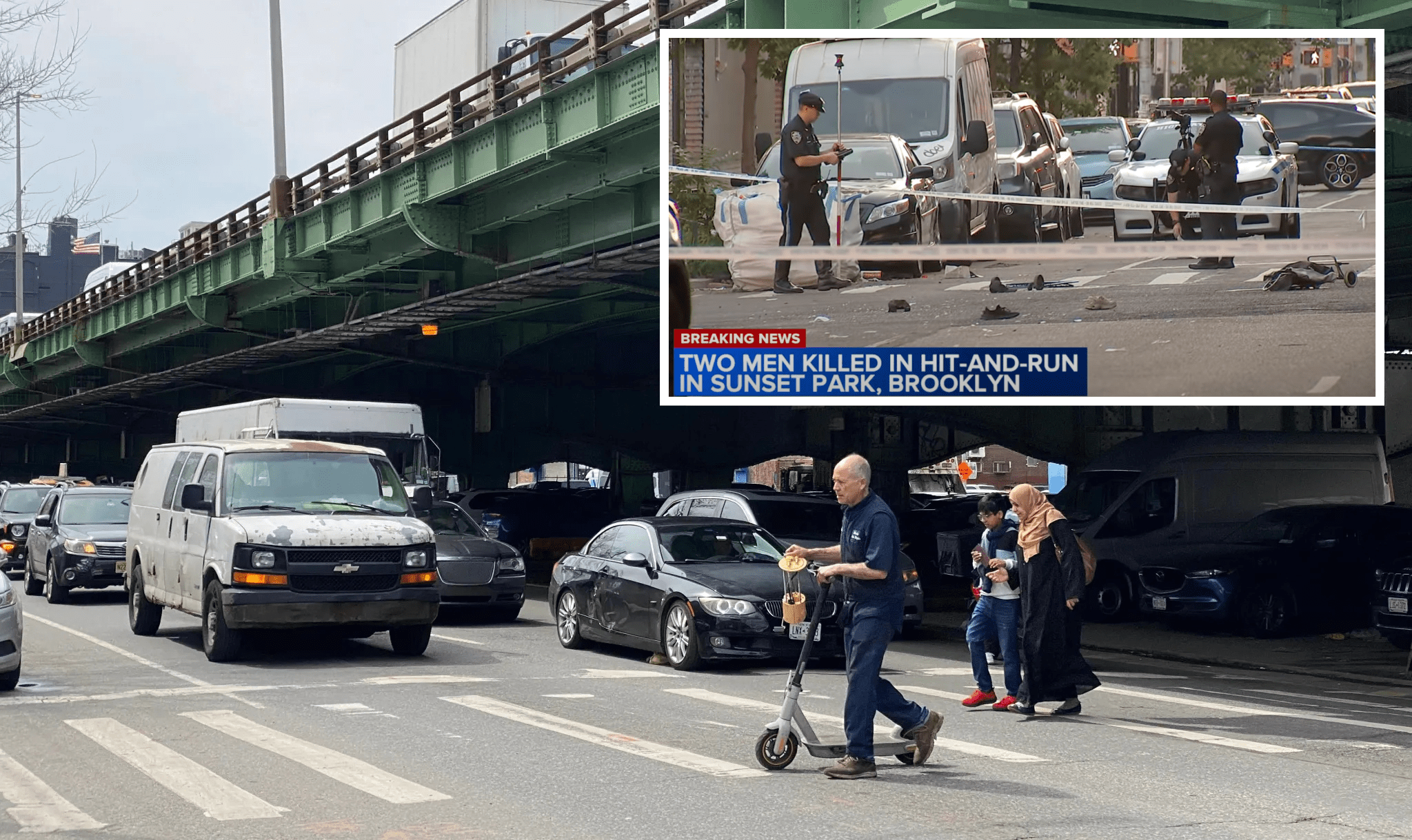DOT plans to put Amsterdam Avenue north of 110th Street on a road diet. But instead of extending the protected bike lane on Upper West Side north into Morningside Heights, the project calls for painted bike lanes.
Under the plan, presented to the Community Board 9 transportation committee last night, Amsterdam would gain painted bike lanes between 113th Street in Morningside Heights and 162nd Street in Washington Heights [PDF]. The new configuration would eliminate one through lane in each direction -- with some exceptions where car traffic is heaviest -- and add left turn bays, left-turn treatments to slow drivers, loading zones, concrete pedestrian islands, and painted curb extensions.
Motorists killed four people walking and severely injured 28 pedestrians and eight cyclists on Amsterdam from 110th to 168th between 2010 and 2014, according to DOT. Dozens of intersections inside the project area saw more than 10 injuries each between 2010 and 2014, and there were around 600 total injuries along the corridor during that time frame.
DOT staff stressed the need for safety measures on Amsterdam, a wide street with no designated space for biking, long crosswalks, and intersections designed for fast turns. Seventy percent of motorists on Amsterdam exceed the speed limit during off-peak hours, according to DOT.
DOT plans to add concrete median islands to provide a refuge for pedestrians and slow turning motorists at 14 intersections. An unspecified number of intersections would get painted curb extensions to slow turns and shorten crossing distances.
While the project would stripe bike lanes where none currently exist, connecting the Upper West Side to Washington Heights and linking up to painted lanes on Amsterdam at 168th Street, it has some weaknesses on top of the lack of protection.
Between 113th Street and 110th Street, where Amsterdam changes to two-way from one-way northbound, DOT will keep two travel lanes in each direction and add sharrows. And during the morning and afternoon rush at 145th and 155th streets, parking would be restricted in the east curb lane to make way for through-traffic. This would position northbound cyclists between two lanes of moving motor vehicles.
When members of the public expressed concern about the southern end of the project, where the northbound protected lane would give way to three blocks of sharrows, DOT staff suggested cyclists concerned for their physical safety could "peel off" to other streets. One woman explained that with painted bike lanes, drivers often bully cyclists who have to veer around other drivers who are double-parked.
Board member Martin Wallace asked DOT several times why the agency had decided against a protected bikeway. "This seems like a lost opportunity," said Wallace. "Why aren't we going further?"
DOT staffers said that getting a protected bike lane installed would take years, presumably referring to the length of a hypothetical political fight, whereas the proposed design, which the agency described as a "compromise," could be built out in a few months, and could be improved upon later.
DOT staff took pains to assure that motor vehicle throughput would be maintained, displaying a level of service chart and telling board members, "This design is going to have a minimal impact on traffic."
Most CB 9 members seemed OK with the project as proposed -- it was a tension-free presentation -- but the committee took no formal action last night. DOT plans to present the plan to CB 12 soon, and return to CB 9 in May. Implementation could begin in early summer and be completed this year.






